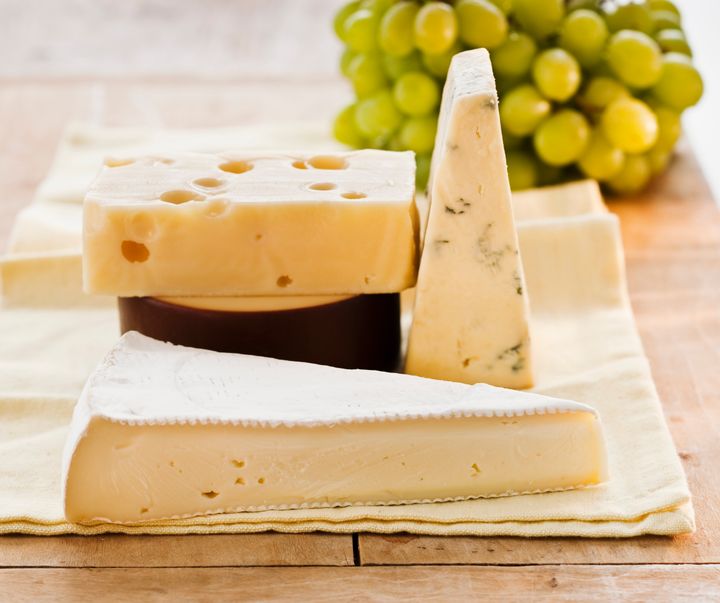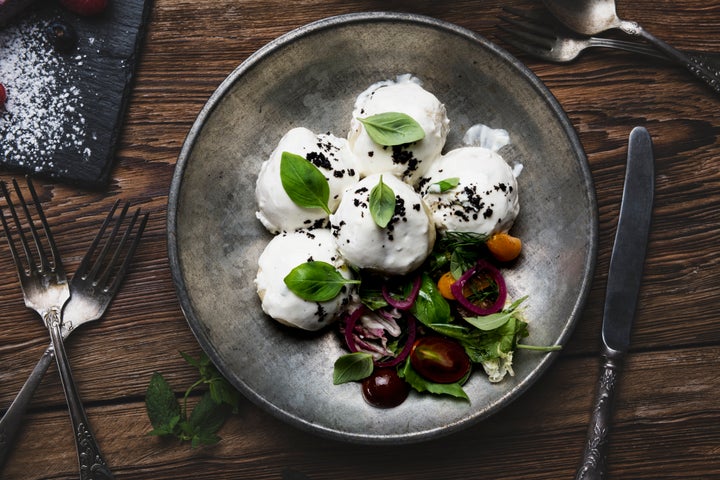
In a perfect world, we would all purchase cheese from our local cheesemonger, a friendly pal who provides us with the finest selection of locally made cheeses available. But in real life, most of us chuck slabs of cheddar into our carts at the supermarket. And usually, that’s just fine.
But sometimes it’s not such a great idea, as we learned when we spoke with a handful of cheese experts.
“When I’m buying cheese from the grocery store, I mainly think about the final use of the cheese I’m buying,” said Emily Monaco, a cheese judge and Paris-based food journalist. “If it’s going to be cooked or melted, I might not shell out for something quite as nice as if I’m putting it on a cheese board.” For example, she wouldn’t spend the extra money on a nuanced clothbound cheddar if she’s grating it to use for nachos.
Of course, not all grocery stores are the same, which means some chains may have a better selection of cheeses than others. “There are worthy cheese finds available at a typical supermarket, but a little discernment can help you sort out the safe bets from the disappointments,” said Pamela Vachon, a cheese and wine instructor at Murray’s Cheese.
When buying cheese at the grocery store, the manager of the cheese section has already tasted the cheese for you and cheese has to live up to standards to be in the dairy case, explained Kristine Hansen, a cheese expert and author of “Wisconsin Cheese Cookbook.″
Below, find out which cheeses the experts avoid buying at the grocery store.
Brie
Brie is a favourite on cheese platters, but experts share they avoid buying industrial-style Brie, which is common in the cheese aisle.
“Precut industrial Brie-style cheese sold in plastic wrap has this slick, PVC-esque texture and a little flavour to speak of,” said Alexandra Jones, an ex-cheesemonger and author of ”Stuff Every Cheese Lover Should Know.” She’s not the only one who shares this sentiment. “Anything labeled ‘Brie’ is not typically a safe bet, in my opinion,” Vachon echoed. “Industrial production Brie is further from the real thing than just about any other kind of cheese, and often has its bloomy white rind sprayed on.”
Want a flavourful and delicious Brie? Jones suggests buying a whole round of Brie instead of a wedge. And she goes directly to the source or her nearest cheesemonger. “You’ll get so much more flavour and a fresher product if you source bloomy rinds from a local farmer or hit up a real live cheesemonger for fresh cuts of high-quality Brie,” she said..
Vachon recommends Bries with rinds that will develop with the cheese, such as Fromager d’Affinois or Delice de Bourgogne.
Burrata
Burrata is an Italian cheese in the shape of a ball that has an outer layer of mozzarella with fresh cream and curds inside. It’s often served at restaurants as an appetiser or served on top of a salad or tomato salad with plenty of extra-virgin olive oil. “A really good burrata should be volatile and precious,” said Louella Hill, an artisan cheesemaker and owner of Ballerino Creamery and author of “Kitchen Creamery: Making Yogurt, Butter & Cheese at Home.”

A freshly made burrata doesn’t quite compare to one that has been shipped long distances and kept in the cheese aisle for a while. “If I see burrata down in the shadows in a big pile in a big case, it’s probably not going to have the flavour I want,” Hill said. She likes to know who the cheesemaker is or have a recommendation from someone she trusts, when she is purchasing a burrata. “If I knew the producer or I knew if I had some piece of information, such as I was friends with the monger, and the monger gave me a wink and said, ‘Guess what showed up today,’ I would buy that burrata in a minute,” Hill said.
Crumbled feta
Crumbled feta in plastic containers line the dairy aisle as an easy and convenient cheese to sprinkle on salads, sprinkle on wraps or whatever you fancy. But pre-crumbled feta is often dry and may have lost some of its flavour and texture compared to feta that is sold in a brine.
Jones prefers to buy a whole block of feta. “I always look for feta packed in brine, ideally made from sheep’s milk, goat’s milk, or a combination of the two,” she said.
You’ll want to check the ingredients list because traditional feta is made with sheep’s milk with about 30% of goat’s milk added, and in Greece and designated areas where it can officially be called feta, it must meet specific requirements and won’t be made with cow’s milk. Jones adds, “Cow’s milk ‘feta’ isn’t really feta.”
Flavoured cheese
This one’s a little more subjective, but Hill admits she’s not always a fan of flavoured cheddar cheese because it can be gimmicky.
“As a cheese maker, I’m most excited about tasting the effects of the fermentation of the milk and less the effect of the added spices,” she said. Hansen agrees that a lot of times flavours may be added as a way to sell cheese. “Similar to flavoured coffee, there is a true art in pairing a cheese with a flavour,” she said. “The best-flavoured cheeses aren’t an explosive expression of the flavour. Instead, they’re more subtle.”
If it’s possible, she recommends asking for a sample to taste and pay attention if the added flavourings bring out complexity in the cheese.
Pre-shredded cheese
When it comes to meal prep, it’s easy to look for ways that will speed up the process of making a meal. Say hello to pre-shredded cheese. However, you may want to reconsider if saving a few minutes grating cheese is worth it.
“Cheese that’s already been grated or shredded may seem like a nice shortcut, but the reality is that it usually has a weird texture, as it’s coated in starch or even cellulose to prevent clumping,” Monaco said. And if you’re adding it to a sauce, the texture can become grainy or gritty.
Monaco prefers to buy quality cheese and keep it in the freezer to grate it directly into a dish. “I keep a plastic bag in the freezer, and any time I have a block of hard cheese that’s starting to be past its prime, I grate it up and add it to the mix, so I always have top-quality grated cheese to hand,” she said.
Pre-cut block cheeses
Debating between your favourite brand of vacuum-sealed cheddar and a pre-cut wedge of cheddar cheese? If you’re thinking one is fresher or better than the other, you’ll want to think again because appearances can be deceiving.
“Pre-cut means the opposite of cut-to-order, as in, pieces that have been cut off of a larger format cheese, but are still packaged for sale as hunks, wedges or smaller blocks,” Vachon explained. Sometimes a pre-cut cheddar may be labeled a specific type of cheddar, such as Irish cheddar, New York State cheddar or Vermont Cheddar, she said.
One way to help you decide if you want to pick up the pre-cut cheese is knowing when it was cut. “Always check dates on precuts, and avoid those that were packed more than a week or so ago,” Jones said.
Vachon stopped buying pre-cut after having too many bad experiences. “They may seem to have a better pedigree than their vacuum-sealed counterparts in the dairy aisle, but who knows how long they’ve been languishing, and I always find they have a stale, plasticky flavour.”
If you do buy a pre-cut chunk of cheddar, Vachon says to “be prepared to cut a quarter-inch slice off of each face of the block to get to the good cheese that hasn’t been overly exposed by its plastic wrap.”